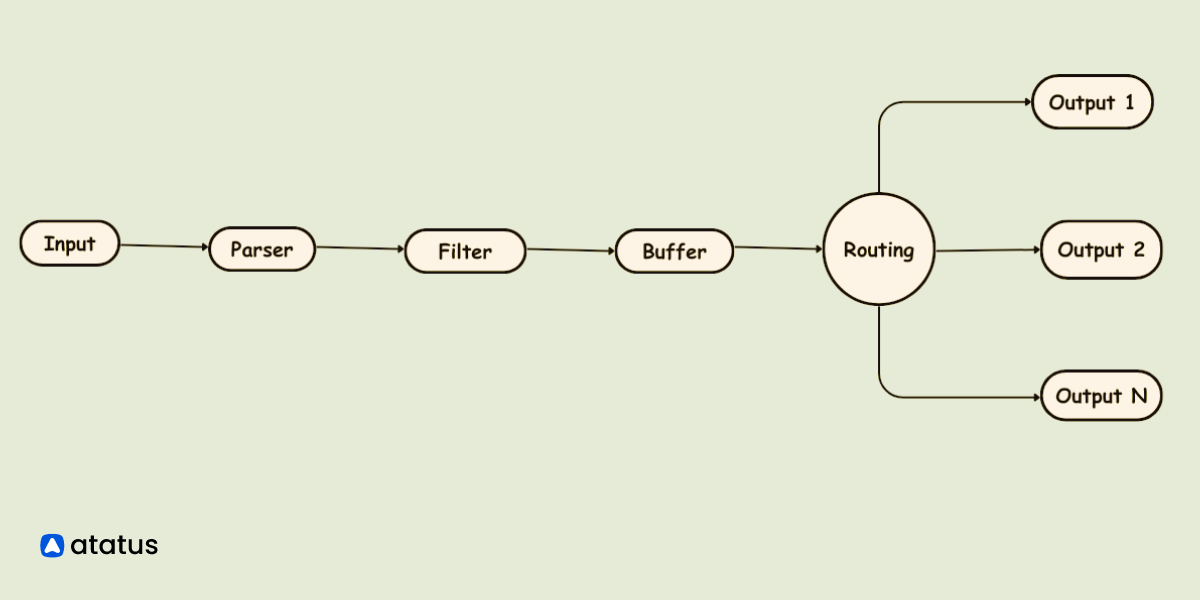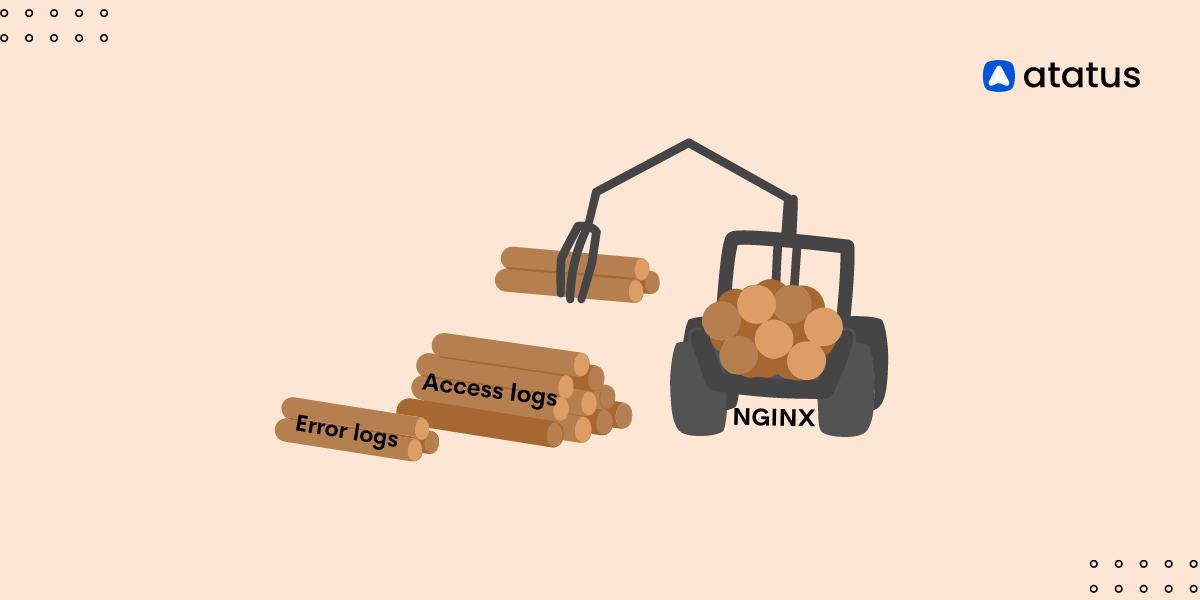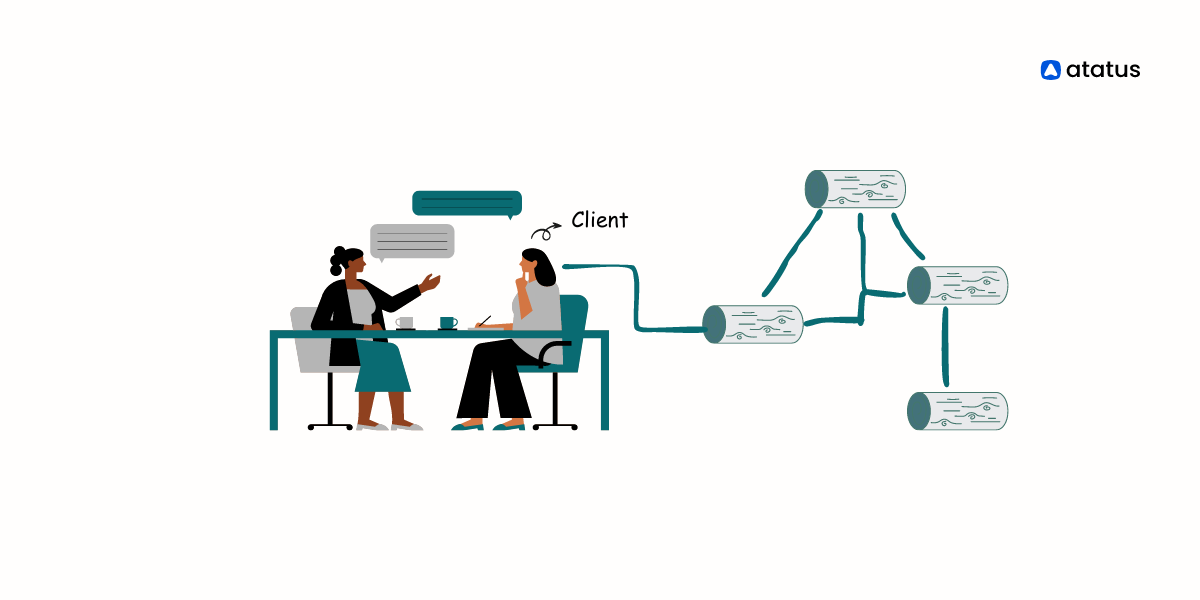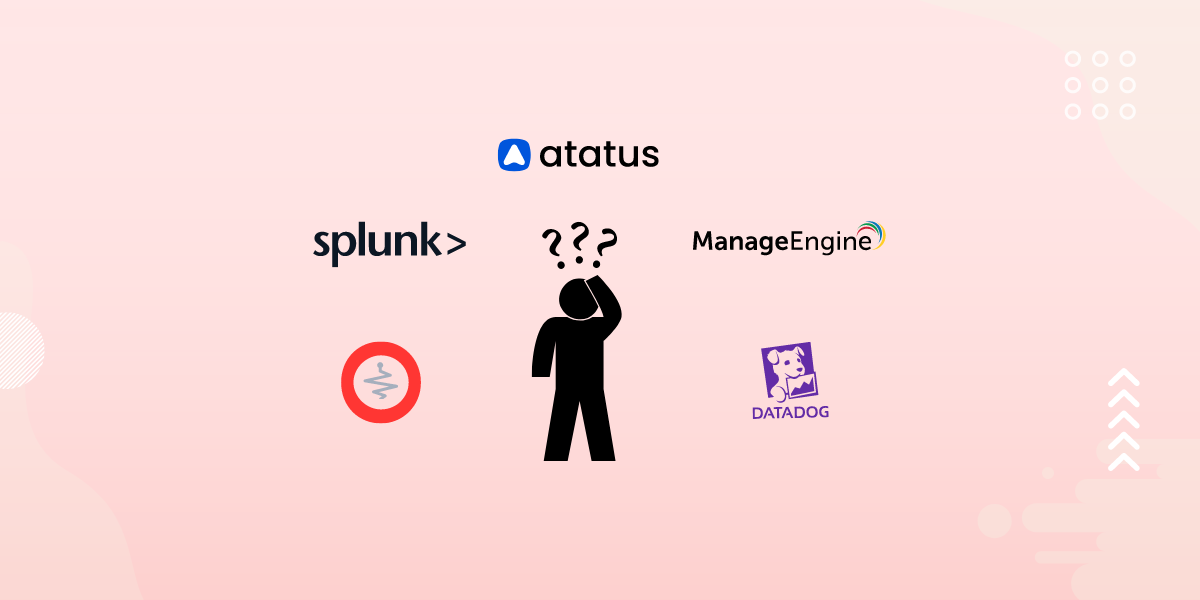Fluentd vs. Fluent Bit: A Comparison
Recently, I came across the quote, "The goal is to transform data into information and information into insights."
This statement emphasizes the significance of data (logs) and the responsibilities associated with software applications for robust data management, particularly log management.
Effective log management is essential for performance optimization, troubleshooting, ensuring strong security, and maintaining compliance. As we already know, logs are essentially collections and recordings of events and activities within an application. We require adept log collectors to collect, process, and aggregate this information efficiently.
Setting up your log collectors can impact your application's performance and resource consumption, introducing unwanted responsibilities. Therefore, opting for dynamic third-party log collectors is a superior choice for log management and observability.
Fluentd and Fluent Bit are emerging as popular log collectors for comprehensive log collection, processing, aggregation, and analysis. Let's delve into the functionalities and features of Fluentd and Fluent Bit, exploring their similarities and differences in this blog.
Table of Contents:
- Fluentd vs. Fluent Bit: An Overview
- Fluentd vs. Fluent Bit: Architecture
- Fluentd vs. Fluent Bit: Features
- Fluentd vs. Fluent Bit: Use Cases
- Fluentd vs. Fluent Bit: Similarities
- Fluentd vs. Fluent Bit: Key Differences
- Choosing the Best!
Fluentd vs. Fluent Bit: An Overview
Fluentd is an open-source data collector designed to create a consolidated logging layer. It enables the integration of data collection and consumption, enhancing the utilization and comprehension of data. It has a powerful plug-in system. It is made and sponsored by Treasure Data.
Fluentd handles logs in the widely used machine-readable JSON format. It is mainly developed in C and has a flexible thin-Ruby wrapper for users. Fluentd's scalability has been demonstrated in the field; its largest user presently collects logs from over 50,000 systems.
Some of the companies using Fluentd are - Line, Atlassian, Amazon Web Services, Twilio and Gree.
Fluent Bit is an open-source telemetry agent crafted to adeptly address the intricacies of collecting and processing telemetry data across diverse environments, ranging from resource-limited systems to intricate cloud infrastructures. Treasure Data also made and sponsored This Project. Fluent Bit efficiently handles a variety of data sources and formats while preserving peak performance.
Fluent Bit was planned and constructed entirely on the greatest principles from Fluentd architecture and general design. It is a lightweight, high-performance tool developed in C that focuses on minimizing resource usage.
It is designed to excel in highly distributed environments where considerations such as limited capacity and reduced overhead (regarding memory and CPU) are paramount. This adaptability makes Fluent Bit particularly suitable for applications in edge computing and IoT use cases.
Some of the companies using Fluent Bit are - Google, Microsoft, Walmart, Digital Ocean and LinkedIn.
Fluentd vs. Fluent Bit: Architecture
Fluentd Architecture
Fluentd boasts a comprehensive architecture designed to efficiently collect, process, and route log data from various sources. It comprises several key components:
- Input Plugins: Fluentd supports a broad spectrum of input plugins, each crafted to collect log data from diverse sources such as log files, system logs, network protocols (TCP/UDP), and inputs from various applications and platforms like Kubernetes.
- Buffering: After collecting log data, Fluentd employs a buffering mechanism to temporarily store it before processing. This buffering step ensures the durability and reliability of data by preventing loss during transit.
- Parser: Fluentd incorporates a parsing step that allows it to extract relevant information from incoming data and standardize its format. This capability is crucial for handling a variety of log formats and achieving uniformity in the processed data.
- Filter Plugins: To enhance its data processing capabilities, Fluentd includes filter plugins that enable users to perform transformations, enrichments, or selective drops of log records based on specified conditions.
- Output Plugins: Fluentd offers a diverse set of output plugins, empowering users to send processed log data to different destinations such as databases, storage systems, other logging services, or various analytics tools.
- Routing and Tagging: Fluentd employs a robust routing mechanism that tags logs and routes them to specific output destinations based on user-defined rules. This feature allows precise control over the destination of different types of log data.
Fluent Bit Architecture
Fluent Bit's architecture is streamlined and efficient, focusing on collecting, parsing, filtering, routing, and outputting log data with minimal resource consumption. Its components include:
- Input: The data entry point, facilitated by Input Plugins, serves as the interface for collecting or receiving data. Examples include log file content, data transmitted over TCP, built-in metrics, and more.
- Parser: Parsers enable converting unstructured data collected from the Input interface into a structured format. Using parsers is optional and depends on the Input plugins in use.
- Filter: The filtering mechanism enables the modification of data ingested by Input plugins, with filters implemented as plugins.
- Buffer: By default, data ingested by Input plugins remains in memory until it is directed and sent to an Output interface.
- Routing: Data received through an Input interface is tagged, signifying the assignment of a tag. This tag is then utilized to determine the routing of the data based on matching rules.
- Output: An output specifies the destination for the data, with destinations managed by output plugins. It's noteworthy that, with the Routing interface, data can be delivered to multiple destinations.

Fluentd vs. Fluent Bit: sFeatures
Fluentd
i.) Unified Logging
Fluentd endeavors to format data into JSON whenever feasible. This approach enables Fluentd to harmonize the entire log data processing lifecycle—collecting, filtering, buffering, and outputting logs—across diverse sources and destinations, forming a Unified Logging Layer.
Processing downstream data becomes notably more straightforward with JSON, as it combines sufficient structure for accessibility while retaining the adaptability of flexible schemas.
ii.) Extensive Plugging Ecosystem
Fluentd features a versatile plugin system that empowers the community to enhance its capabilities. With over 500 community-contributed plugins, Fluentd seamlessly connects numerous data sources and outputs. By harnessing these plugins, you can promptly optimize the utilization of your logs.
iii.) Minimum Resource Required
Fluentd is crafted using a blend of C language and Ruby, demanding minimal system resources. A standard instance operates with 30-40MB of memory and can efficiently process 13,000 events per second per core.
For more stringent memory constraints (less than 450kb), consider exploring Fluent Bit, the lightweight forwarder designed for Fluentd.
iv.) Built-in Reliability
Fluentd provides buffering options, including memory and file-based mechanisms, to safeguard against inter-node data loss. Additionally, Fluentd supports resilient failover configurations and can be established for high availability.
Over 2,000 data-driven companies trust Fluentd to enhance their products and services by optimizing and comprehending their log data.
Fluent Bit
- Optimized Performance: Achieve high throughput while minimizing resource consumption, ensuring efficient operation across various environments.
- Versatile Data Parsing: Employ various parsers, including JSON, Regex, LTSV, and Logfmt, to transform unstructured messages into a structured format.
- Metrics Compatibility: Seamlessly integrate with Prometheus and OpenTelemetry, facilitating the monitoring of performance metrics.
- Reliability and Data Integrity: Establish robust mechanisms to guarantee the reliability and integrity of data, promoting consistency and accuracy.
- Effective Backpressure Handling: Manage backpressure efficiently to control data flow, preventing overload and maintaining system stability.
- Flexible Data Buffering: Implement buffering in memory and file systems to optimize data storage and prevent loss during processing.
- Built-in Security Features: Benefit from built-in TLS/SSL support for secure data transmission, ensuring the protection of sensitive information.
- Asynchronous I/O Operations: Leverage asynchronous I/O operations to enhance system responsiveness and efficiency.
- Rich Library of Built-in Plugins: Access a diverse library of over 100 built-in plugins, catering to a wide array of data sources, filters, and output destinations.
- Comprehensive Extensibility: Develop custom plugins in C language, expanding functionality to meet specific requirements.
- WebAssembly (WASM) Support: Utilize WebAssembly (WASM) for Filter Plugins or Input Plugins, adding a layer of flexibility in customization.
- Scripting Capabilities: Create filters using Lua or output plugins in Golang, allowing developers to select scripting languages based on their preferences.
- Effective Monitoring: Expose internal metrics over HTTP in JSON and Prometheus formats, enabling efficient monitoring and performance analysis.
- Stream Processing Capabilities: Perform data selection and transformation through simple SQL queries, providing versatile stream processing capabilities.
- Dynamic Stream Creation: Generate new data streams based on query results, enhancing adaptability in data handling.
- Aggregation Windows Implementation: Implement aggregation windows for efficient data summarization and analysis.
- Data Analysis and Prediction: Engage in time-series forecasting to derive valuable insights from data analysis and prediction.
- Platform Portability: Run Fluent Bit seamlessly on Linux, macOS, Windows, and BSD systems, ensuring portability across various platforms.
Fluentd vs. Fluent Bit: Use Cases
Fluentd
- Real-time Data Processing - Fluentd's real-time log processing capabilities make it a good fit for situations where quick decisions and actions based on log data are essential.
- Distributed Systems - In distributed systems, Fluentd is frequently used to gather and correlate logs from various nodes and services for thorough monitoring.
- Containerized Environment - Fluentd makes it easier to gather and aggregate container logs in containerized settings such as Kubernetes, which improves visibility and troubleshooting.
- Security Information and Event Management (SIEM) - Fluentd is used in SIEM solutions to collect and analyze security logs, which helps detect and investigate security issues.
- IoT Data Collection - Fluentd collects and processes logs from IoT devices, enabling organizations to monitor and analyze data from many connected devices.
Fluent Bit
- Edge Computing - Fluent Bit's lightweight design makes it perfect for edge computing scenarios, where resources are limited and quick log gathering is critical.
- IoT Edge Devices - It is extensively used on IoT edge devices to gather and send telemetry data, optimizing resource use in edge computing applications.
- Metrics Collection and Monitoring - Fluent Bit collects and forwards metrics data, supporting Prometheus and OpenTelemetry, which helps establish efficient monitoring systems.
- Data Streaming to Cloud - Fluent Bit streams logs and data from edge devices to cloud services, allowing for centralized monitoring and analysis in cloud environments.
- Microservices Architectures - Fluent Bit effectively collects logs from individual services in microservices architectures, enabling distributed logging for better observability.
Fluentd vs. Fluent Bit: Similarities
- Released under the provisions of the Apache Licence, Version 2.0.
- Graduated Hosted projects by the Cloud Native Computing Foundation (CNCF)
- Production-grade solutions: millions of times a day, deployed.
- Community-driven and vendor-neutral projects
- Widely Accepted by the Industry: all significant businesses, including Microsoft, Google Cloud, AWS, and hundreds more, rely on it.
Fluentd vs. Fluent Bit: Key Differences
| Aspect | Fluentd | Fluent Bit |
|---|---|---|
| Design Philosophy | Complete log management system. | A lightweight and efficient telemetry agent and forwarder. |
| Resource Usage | Greater memory footprint and increased resource requirements. | It is optimized for minimum resource utilization and a smaller memory footprint. |
| Use Cases | Centralized log handling in more expansive systems. | Resource-limited situations, edge computing, and the Internet of Things. |
| Plug-in Ecosystem | A broad, well-developed ecosystem with various inputs, filters, and outputs. | A comprehensive suite of plugins emphasizing efficiency and specialized use cases. |
| Flexibility vs. Features | Provides increased flexibility through full log processing features. | Has a lower feature count and places more emphasis on efficiency and simplicity. |
| Integration | Often, a stand-alone log management system that interfaces with other systems to provide analysis. | Often used as a forwarder to transmit logs into Fluentd or other centralized systems. |
| Configuration | Due to the various functionality and setting possibilities, the learning curve may be longer. | has a lighter, more straightforward configuration that is intended for rapid integration. |
| Scalability | Excellent for more thorough customization required for large-scale deployments. | Fast integration; effective functioning in resource-constrained contexts. |
| Scope | Containers/Servers | Embedded Linux / Containers / Servers |
| Language | C & Ruby | C |
| Memory | > 60 MB | ~ 1 MB |
| Performance | medium | High |
| Dependencies | It takes a specific quantity of gems to build as a Ruby Gem. | No dependencies unless a particular plugin calls for them. |
| Plugins | The number of possible external plugins exceeds 1000. | The number of integrated plugins is over 100. |
| License | Apache License v2.0 | Apache License v2.0 |
Choosing the Best!
Fluentd is your go-to tool for dealing with large amounts of logs that require complex processing, filtering, and parsing. It's ideal for larger systems with a lot of logs because of its feature-rich design. Fluentd offers a developed plugin ecosystem that can help you with a range of tasks. Fluentd is the best option when you wish to centralise all of your logs for deep analysis.
Fluent Bit is a resource-saving, lightweight solution for systems with limited resources, such as those found in edge computing and Internet of Things devices. Because of its straightforward design, it's perfect for quick and easy setup. If efficiently gathering and forwarding logs to another system is your primary objective, then this is ideal.
When Fluent Bit forwards logs to Fluentd for centralised management, Fluentd and Fluent Bit can function well together in some situations. Consider your unique requirements, your available resources, and the features that are most important to your logging and data processing duties to make the best decision.
Conclusion
Fluentd and Fluent Bit are complementary or stand-alone technologies that can function as aggregators or forwarders. Cloud providers have recently migrated from Fluentd to Fluent Bit due to speed and compatibility concerns. Fluent Bit is now seen as the next-generation solution.
The pairing of Fluentd and Fluent Bit is gaining significant traction in Kubernetes deployments, primarily due to their synergistic collaboration. In this setup, Fluent Bit takes on the role of a nimble shipper, collecting data from diverse nodes in the cluster.
It then efficiently transmits this data to Fluentd, which handles aggregation, processing, and routing to various supported output destinations. This combined approach enhances the overall effectiveness of log management within Kubernetes environments.
After consolidating and aggregating log data, the next crucial step is employing a centralized log management tool for efficient storage and in-depth log analysis. This is precisely where Atatus steps in, offering robust capabilities for streamlined log handling and insightful analysis.
Atatus Logs Monitoring and Management
Atatus offers a Logs Monitoring solution which is delivered as a fully managed cloud service with minimal setup at any scale that requires no maintenance. It monitors logs from all of your systems and applications into a centralized and easy-to-navigate user interface, allowing you to troubleshoot faster.

We give a cost-effective, scalable method to centralized logging, so you can obtain total insight across your complex architecture. To cut through the noise and focus on the key events that matter, you can search the logs by hostname, service, source, messages, and more. When you can correlate log events with APM slow traces and errors, troubleshooting becomes easy.
#1 Solution for Logs, Traces & Metrics
APM
Kubernetes
Logs
Synthetics
RUM
Serverless
Security
More





